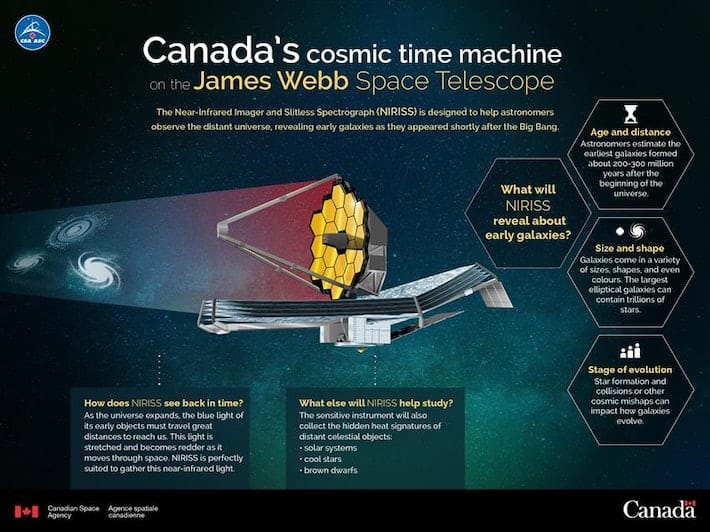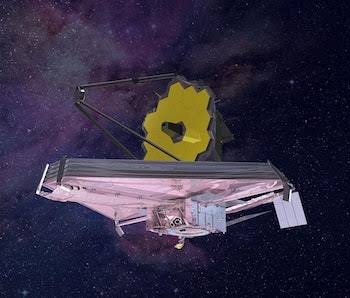On January 15, a James Webb Space Telescope instrument had a disruption, and a cosmic rays is most likely to blame. The flight software of NIRISS timed out as a result of this. Teams from both space agencies are heaving a sigh of relief following a careful examination, a reboot, and a test observation.
NASA’s Claim
NASA and the Canadian Space Agency claim that a cosmic ray impacted the James Webb Space Telescope (JWST) and damaged one of its pieces of equipment (CSA).
The Near Infrared Imager and Slitless Spectrograph (NIRISS), Canada’s contribution to the JWST, encountered a perplexing anomaly on January 15 when it suffered a communications delay within the instrument.
Location of the Telescope
NIRISS’ flight software then ran out of time as a result of this. Teams from both space agencies are exhaling with relief following an exhaustive review, a reset, and a test observation. In the past year, NIRISS has been used to investigate the atmospheres of hypothetical alien worlds.
NASA, the Canadian Space Agency (CSA), and the European Space Agency (ESA) decided to send the telescope to a cold location around a million miles from Earth in order for NIRISS and the other three instruments onboard JWST to perform at their best.
Here, without the distraction of our planet’s thermal radiation, JWST is able to detect the smallest cues from incredibly far away. But from this height, it is also exposed to cosmic rays.
Cause of electrical system disruption
According to the NASA blog article published on Tuesday that included the most recent NIRISS update, these high-energy slingshots represent an occupational risk.
According to the site, “Encountering cosmic rays is a common and expected element of running any spacecraft.” They said, “Following a thorough study by NASA and Canadian Space Agency (CSA) experts, the reason was judged to be most likely a galactic cosmic ray, a type of high-energy radiation from beyond our solar system that can occasionally cause electrical system disruption.”
JWST engineers chose to restart the instrument because they thought that was a likely scenario for bringing NIRISS back online. However, this vantage point makes it susceptible to cosmic radiation.
Interference with Electronic Systems
The NASA blog post on Tuesday, which provided the most recent NIRISS update, stated that these high-energy slingshots are an occupational hazard. The blog states that coming into contact with cosmic rays is a typical and expected aspect of running any spacecraft.
“Following a thorough study by experts from NASA and the Canadian Space Agency (CSA), the cause was determined to be most likely a galactic cosmic ray, a type of high-energy radiation from beyond our solar system that can occasionally interfere with electronic systems,” they added.
After deciding that was a likely approach to getting NIRISS back online, JWST engineers made the decision to reboot the instrument.

NIRISS’s Revelation
“NIRISS telemetry data showed normal timing once the reboot was complete, and to thoroughly confirm, the team organised a test observation.” The Webb team instructed the instrument to make the observation on January 28, and the outcomes confirmed on January 30 that NIRISS has returned to full scientific operations, as stated in the blog.
Conclusion
The telescope’s first set of scientific data was made public in July 2022, dazzling viewers with previously unheard-of images of the cosmos.
The most recent request for study idea submissions may have attracted a record-breaking amount of entries, according to Dan Coe, a JWST Instrument Scientist who works on the telescope’s near-infrared camera (NIRCam).
